How Laser Weapons Differ From Plasma Weapons
Anybody who grew up watching Star Wars must have wondered at some point why blaster bolts are discrete "dashes" or segments of light which travel so slow that they can be dodged. Or why lightsaber beams just stop at an arbitrary point instead of continuing, as a laser beam ought to.
Canonically, the answer is that neither of these technologies use lasers. Blasters are basically plasma weapons, and light sabers are more or less weaponized, compact plasma cutting torches. But what's the difference? How do plasma weapons and laser weapons work?
I'll have to start out by observing that today, only laser weapons actually exist. The US Navy has battleships out on the ocean today with weaponized lasers in the tens and hundreds of kilowatts. They're used for shooting down drones, and disabling the engines of suicide bomber boats (yes, those are a thing) from a safe distance.
To be lightweight enough to fly, drones have to use fairly thin metal components and a lot of plastic. This means they are very thermally conductive and readily absorb the heat from a laser. They are also densely packed clusters of delicate electronics and volatile lithium polymer batteries that explode in a fireball if you so much as look at them funny.
Consequently it's not too impressive that they can be disabled with a laser beam until you realize they're doing it over distances of many miles, in all kinds of weather conditions. That requires the high wattage involved so that when the beam finally reaches the target, it's still powerful enough to do serious damage.
So, how do lasers work? They shoot a beam of light obviously, but what makes that different from the light that comes out of your lightbulb? For one thing, it's all the same wavelength (color). I mean absolutely identical, every last photon. You can't get that result from a tinted bulb.
Next, the light is coherent and directional. It's being emitted as a discrete, uniform beam. These properties result from how the light is permitted to exit the laser, but also from how it's generated: Radiation of various types, depending on the kind of laser, is used to excite electrons.
When excited in this way, electrons release energy in the form of light, which is to say photons. Interestingly, depending on the desired properties of the resulting laser light, sometimes the source of radiation used to excite the electrons is another laser.
So, how do plasma weapons work? Strictly speaking they don't, since no plasma weapons exist today. The closest thing we have is the plasma cutter. Plasma is generated by vaporizing some sort of feedstock matter (usually already gaseous) with properties conducive to this use.
Then it's excited with electrical current (or RF radiation in some applications) until it achieves a higher energy state, plasma. The plasma is then permitted to escape the chamber through a narrow opening as a plasma jet driven by its own high pressure, or possibly accelerated electromagnetically using a channel that works similarly to a railgun or coilgun.
Plasma weapons, as a speculative possible future technology, differ only in that they assume some method will exist to electromagnetically confine the plasma into a size and shape suitable for a projectile. This ball of plasma, confined by a strong electromagnetic field, is then accelerated down a railgun towards the target.
The idea is that the plasma only reaches maximum temperature either nanoseconds before leaving the barrel, or between the time it leaves the barrel and the time it impacts the target. The idea is to get the plasma clear of the weapon internals as quickly as possible due to the metal fatigue of such high temperatures.
The electromagnetic confinement field would keep the plasma coherent on its trajectory, so that it's still hot enough to cause damage when it arrives to the target. This confinement field is the piece of the plasma weapon equation which currently doesn't exist.
It's simple enough to generate an electromagnetic field, but not to project it from the source of generation, keeping it in a particular shape along the way. What's needed for that is basically Star Trek force field technology. You might imagine a small bullet-like projectile made of tungsten or some other extremely heat resistant metal however.
The projectile could include the reaction mass to be vaporized and excited into plasma, as well as the energy necessary to do that. It could also contain its own electromagnetic field generator to confine the resulting plasma. The problem here is mostly energy density.
How do you pack the energy necessary to make plasma as well as generate an EM field strong enough to confine it into something as small as a bullet? Also imagine the high cost per round, and realize the round will unavoidably melt or even vaporize itself during flight. Perhaps after only a few feet or yards, depending on the temperature of the plasma and the metals used.
Plasma weapons are popular in science fiction mostly because they look cool onscreen. They resemble energy bullets and give us a familiar basis of comparison for war scenes. Laser weapons usually have an invisible or only slightly visible beam, make no noise and cause no explosion or visible reaction to the target other than a rapidly deeper burn hole.
This makes accurate portrayals of war using laser weapons less visually compelling and thus, less common in cinema.
Although, for my money, laser weapons are all the more terrifying because they are silent and often invisible. You can't even tell you're being shot at until you're dead. This is part of why laser weapons are becoming reality, they offer meaningful advantages over bullets.
Laser beams travel at the speed of light. You don't have to lead your target or do ballistics calculations. They can't be intercepted. They make no noise to give away where you're shooting from. Plasma weapons on the other hand offer no real advantages over bullets.
They make noise, you have to lead your target, they are brightly visible so everybody can see where you're shooting from and realistically their range would be much shorter than bullets. They are in fact a step down from what we're already using, except that they are potentially a little bit more destructive.
Stay Cozy!
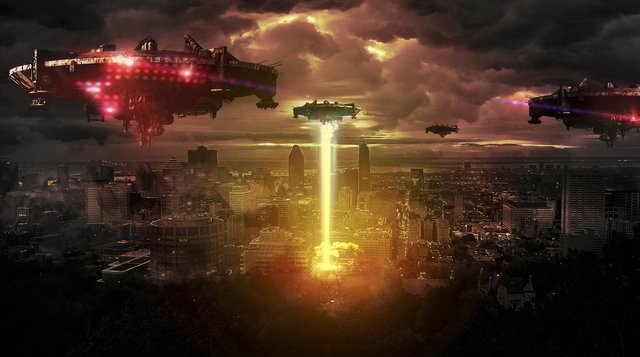

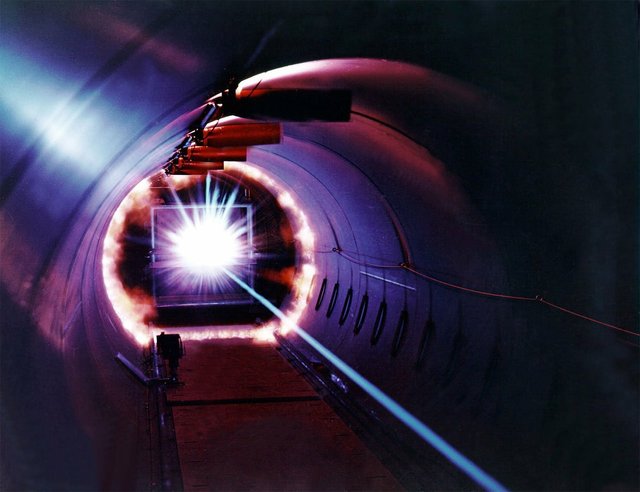
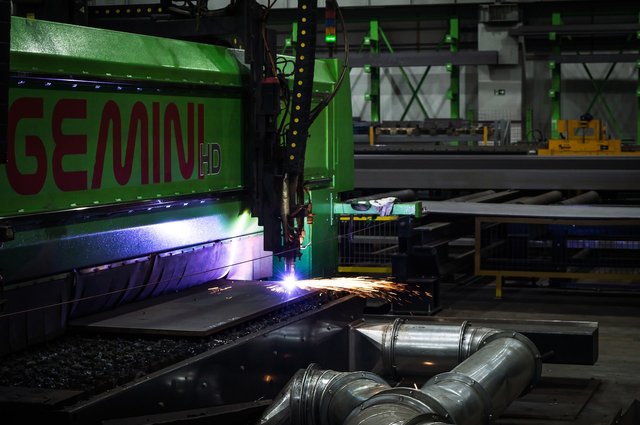
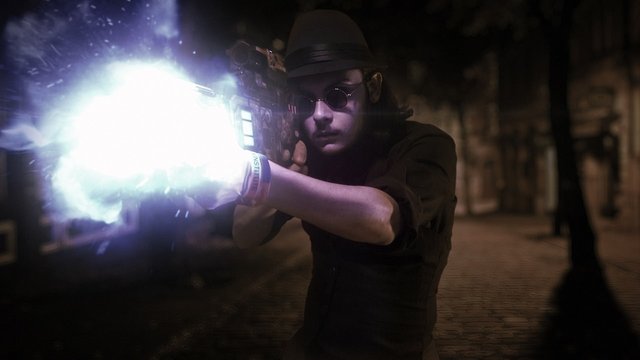
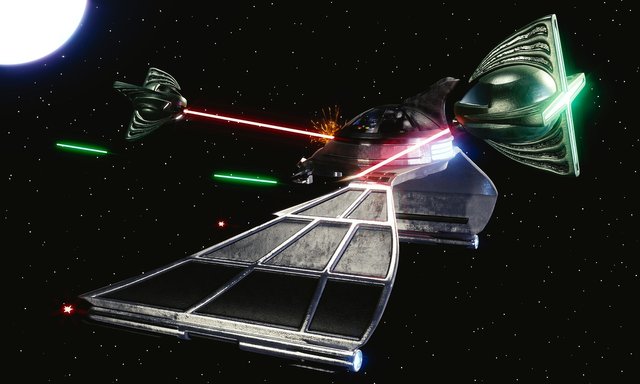
@alexbeyman,
I was read about that Laser weapon technology before, but this is the 1st time I heard about Plasma weapons! It seems like a hell dog when comparing with laser!
Cheers~
So I'm thinking the weapon used in Independence Day in the White House Fly Away scene was probably either a plasma weapon or another third option perhaps.
Weapons made of lasers are very good and useful. But if there is a weapon capable of firing with telepathy and the core of mind? then the laser weapon becomes missed.
Plasma weapons? I really want to have it, I think like a child's toy.
Excellent postings, the development of this science is very fast. and very helpful in the industrial world. imagine to cut the iron plate with the laser into a very easy thing. thanks bro Alex.
It may surprise you to learn that laser cutters have been used industrially since 1965.
if you want to learn about lasers, the book fits into a reference
Your lack of faith disturbs me. The power of your laser is insignificant compared to the power of the force
-bwzzzzzt-
(Sound of my totally impractical and awesome plasma sabre activating)
Posted using Partiko Android
Hehe
Awww! Amazing info! Thanks. :) I've always wondered how much from science fiction laser technology is real and/or achievable. I also feel it very strange that the Star Wars lightsabers can collide with each other. Do you have any idea what may cause this in this fictional realm? As far as I know, neither plasma nor lasers nor any other kind of energy can do that.
Collision of the electromagnetic fields which confine the plasma into the shape of the "blade" I guess. But it's all made up for the sake of cool looking cinematic light saber battles anyway.
The truth could not be far fetched like seriously from most of the actions firm I have watched, I wondered much but now you were expantiate more on the two weapons to some extent.
This was a cool read. I think it is worth noting that laser weapons would solve problems (which you point out at the end of the post) in a way that plasma wouldn't. If plasma is essentially a projectile weapon, it would have to have some benefit that makes it worth working on and increased power isn't really enough because that can be done by upping velocity with a conventional projectile.
Indeed, hence the research into naval railguns. Which I am a proponent of because their intended use case is defensive, and they save taxpayers a tremendous amount of money per round fired when compared to cruise missiles.
The savings are the big thing with that. I could live the rest of my life without working for less than half than one of those missiles costs. I have heard that they are safer for the user too because they don't have to store explosives on the ship.
This is an issue I have a problem with in movies where some superhero or monster or whatever gets shot with all our weapons without taking dammage. I have to call bs there. If you hit something hard enough, it will break.
xplain relativity too :p
You really schooled me in physics and the state of matter. The comments too are educative. @Curie should be on his way here soon.